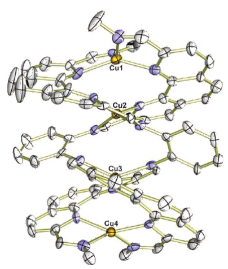-
Effect of additives on the synthesis and reversibility of Ca(BH4)2
C. Rongeat, V. D'Anna, H. Hagemann, A. Borgschulte, A. ZŁttel, L. Schultz and O. Gutfleisch
Journal of Alloys and Compounds, 493 (1-2) (2010), p281-287


DOI:10.1016/j.jallcom.2009.12.080 | unige:6412 | Abstract | Article PDF

Metal borohydrides are potential materials for solid state hydrogen due to their high gravimetric and volumetric hydrogen densities. Among them, Ca(BH4)2 is particularly interesting because of the predicted suitable thermodynamic properties. In this work, we investigate a new synthesis route using high pressure reactive ball milling. Starting from CaH2 and CaB6 with a TiCl3 or TiF3 as additive, a reaction yield of 19% is obtained after 24 h milling at room temperature and 140 bar H2. The presence of Ca(BH4)2 is confirmed by the presence of the stretching mode of the [BH4]- group in the infrared spectra of the as-milled samples. Using in-situ XRD, we observe the recrystallisation of a poorly crystallised Ca(BH4)2 phase present after milling. The reversible decomposition/formation of Ca(BH4)2 is obtained with higher yield (57%) using higher temperature and TiF3 as additive but not with TiCl3 despite its similar electronic structure. The differences observed using different additives and the influence of the anion are discussed.
